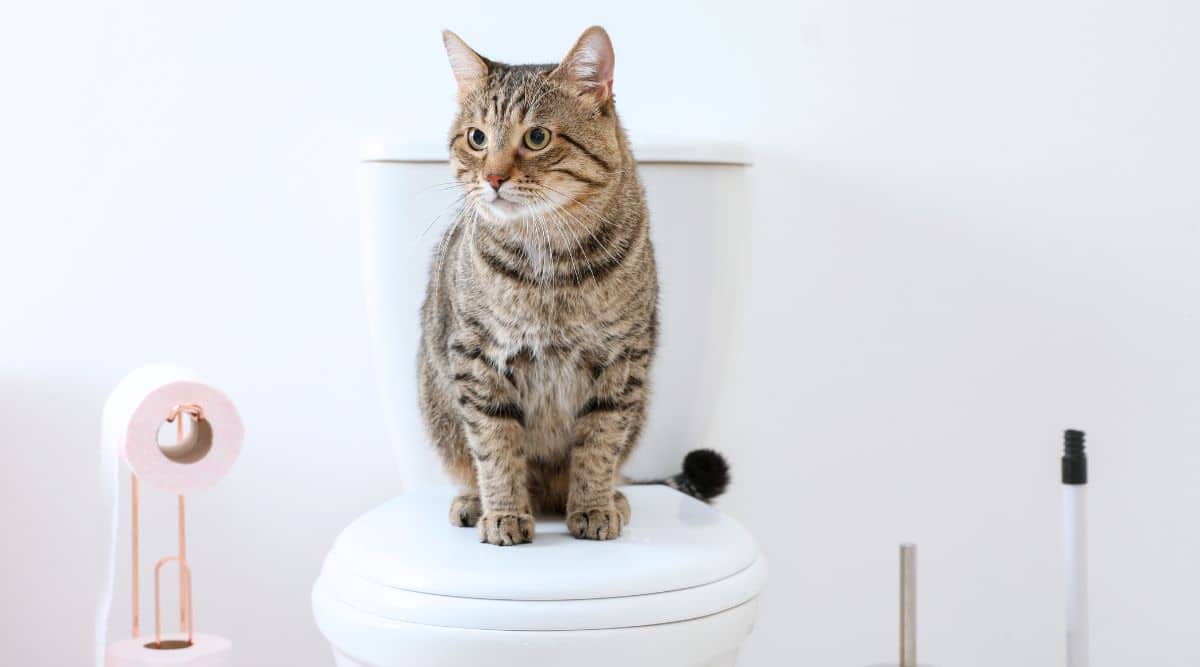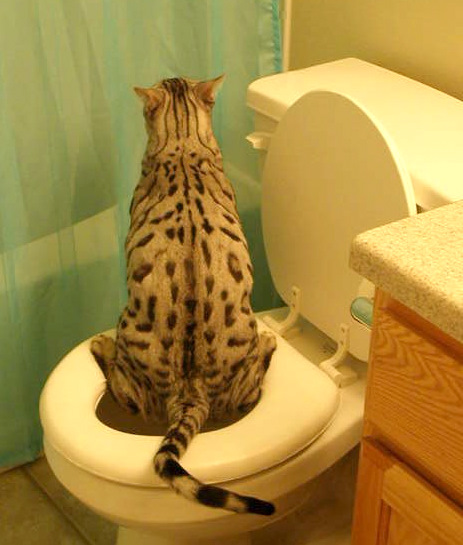Vital Considerations Regarding Flushing Animal Waste Down the Toilet
Vital Considerations Regarding Flushing Animal Waste Down the Toilet
Blog Article
This great article below in relation to 10 Things You Should Never Flush Down The Toilet is amazingly informative. Read it for your own benefit and figure out what you think about it.

When it involves getting rid of waste, specifically animal waste, many people commonly consider the convenient option of flushing it down the commode. Nevertheless, this relatively simple solution can have severe consequences for the setting and public health. In this post, we'll discover why flushing animal waste down the toilet is a negative concept and supply alternate techniques for correct disposal.
Introduction
Proper garbage disposal is important for maintaining environmental sustainability and public health. While it may seem harmless to flush animal waste down the toilet, it can lead to different problems, both for the atmosphere and human wellness.
Risks of flushing animal waste
Environmental impact
Flushing animal waste introduces damaging germs and pathogens right into rivers, which can negatively affect water ecological communities. These pathogens can contaminate water sources and damage aquatic life, interfering with fragile ecosystems.
Public health issues
Animal waste includes damaging germs such as E. coli and Salmonella, which can present severe health and wellness threats to human beings. Purging pet waste down the bathroom can contaminate water supplies, leading to the spread of conditions and infections.
Alternatives to flushing
As opposed to flushing pet waste down the commode, there are a number of alternative disposal methods that are extra eco-friendly and hygienic.
Composting
Composting pet waste is a green method to get rid of it. By composting, raw material is broken down into nutrient-rich dirt, which can be made use of to fertilize gardens and plants.
Garbage dump disposal
Dealing with animal waste in a land fill is an additional alternative. While not as eco-friendly as composting, it is a more secure alternative to flushing, as it prevents the contamination of water sources.
Pet dog garbage disposal systems
There are customized pet dog waste disposal systems available that safely and hygienically deal with animal waste. These systems commonly make use of enzymes to break down waste and remove odors.
Steps to proper pet waste disposal
To ensure correct disposal of pet waste, adhere to these actions:
Scooping and nabbing waste
Routinely scoop and bag animal waste making use of naturally degradable bags. This stops waste from infecting the setting.
Using marked waste bins
Dispose of bagged animal waste in designated waste bins, such as compost bins or landfill containers. Prevent flushing it down the toilet in all costs.
Cleansing can and pet locations frequently
Routinely tidy can and animal locations to avoid the build-up of waste and germs. Usage pet-safe cleansing products to preserve hygiene.
Advantages of correct disposal methods
Adopting appropriate disposal approaches for pet waste offers a number of benefits:
Minimized environmental pollution
Correct disposal methods reduce the danger of environmental pollution, securing rivers and environments from contamination
Lessened threat of water contamination.
By preventing flushing animal waste down the toilet, the risk of water contamination is significantly lowered, guarding public health.
Boosted cleanliness and hygiene
Proper disposal methods advertise much better hygiene and health, creating a safer setting more info for both humans and pets.
Conclusion
To conclude, purging animal waste down the commode is harmful to the environment and public health. By embracing different disposal methods and complying with correct waste management techniques, we can minimize the negative influence of pet waste and add to a cleaner, much healthier planet.
Why You Should Never Flush Cat Poop Down the Toilet
A rose by any other name might smell as sweet, but not all poop is created equal. Toilets, and our sewage systems, are designed for human excrement, not animal waste. It might seem like it couldn’t hurt to toss cat feces into the loo, but it’s not a good idea to flush cat poop in the toilet.
First and foremost, assuming your cat uses a litter box, any waste is going to have litter on it. And even the smallest amount of litter can wreak havoc on plumbing.
Over time, small amounts build up, filling up your septic system. Most litter sold today is clumping; it is made from a type of clay that hardens when it gets wet. Ever tried to scrape old clumps from the bottom of a litter box? You know just how cement-hard it can get!
Now imagine just a small clump of that stuck in your pipes. A simple de-clogger like Drano isn’t going to cut it. And that means it’s going to cost you big time to fix it.
For an amusing, graphic tale of what happens when you flush too much litter down the toilet all at once, take a few minutes to read Gene Weingarten’s 2017 Washington Post column “So that’s what happens when you flush cat litter down the toilet.”
Parasitic Contamination
Believe it or not, your healthy kitty may be harboring a nasty parasite. Only cats excrete Toxoplasma in their feces. Yet it rarely causes serious health issues in the cats that are infected. Most people will be fine too if infected. Only pregnant women and people with compromised immune systems are at risk. (If you’ve ever heard how women who are expecting are excused from litter cleaning duty, Toxoplasma is why.)
But other animals may have a problem if infected with the parasite. And human water treatment systems aren’t designed to handle it. As a result, the systems don’t remove the parasite before discharging wastewater into local waterways. Fish, shellfish, and other marine life — otters in particular — are susceptible to toxoplasma. If exposed, most will end up with brain damage and many will die.
Depending on the species of fish, they may end up on someone’s fish hook and, ultimately on someone’s dinner plate. If that someone has a chronic illness, they’re at risk.
Skip the Toilet Training
We know there are folks out there who like to toilet train their cats. And we give them props, it takes a lot of work. But thanks to the toxoplasma, it’s not a good idea.
Leave the toilet to the humans, and accept your future litter cleaning duty.

Routinely tidy can and animal locations to avoid the build-up of waste and germs. Usage pet-safe cleansing products to preserve hygiene.
Advantages of correct disposal methods
Adopting appropriate disposal approaches for pet waste offers a number of benefits:
Minimized environmental pollution
Correct disposal methods reduce the danger of environmental pollution, securing rivers and environments from contamination
Lessened threat of water contamination.
By preventing flushing animal waste down the toilet, the risk of water contamination is significantly lowered, guarding public health.
Boosted cleanliness and hygiene
Proper disposal methods advertise much better hygiene and health, creating a safer setting more info for both humans and pets.
Conclusion
To conclude, purging animal waste down the commode is harmful to the environment and public health. By embracing different disposal methods and complying with correct waste management techniques, we can minimize the negative influence of pet waste and add to a cleaner, much healthier planet.
Why You Should Never Flush Cat Poop Down the Toilet
A rose by any other name might smell as sweet, but not all poop is created equal. Toilets, and our sewage systems, are designed for human excrement, not animal waste. It might seem like it couldn’t hurt to toss cat feces into the loo, but it’s not a good idea to flush cat poop in the toilet.
First and foremost, assuming your cat uses a litter box, any waste is going to have litter on it. And even the smallest amount of litter can wreak havoc on plumbing.
Over time, small amounts build up, filling up your septic system. Most litter sold today is clumping; it is made from a type of clay that hardens when it gets wet. Ever tried to scrape old clumps from the bottom of a litter box? You know just how cement-hard it can get!
Now imagine just a small clump of that stuck in your pipes. A simple de-clogger like Drano isn’t going to cut it. And that means it’s going to cost you big time to fix it.
For an amusing, graphic tale of what happens when you flush too much litter down the toilet all at once, take a few minutes to read Gene Weingarten’s 2017 Washington Post column “So that’s what happens when you flush cat litter down the toilet.”
Parasitic Contamination
Believe it or not, your healthy kitty may be harboring a nasty parasite. Only cats excrete Toxoplasma in their feces. Yet it rarely causes serious health issues in the cats that are infected. Most people will be fine too if infected. Only pregnant women and people with compromised immune systems are at risk. (If you’ve ever heard how women who are expecting are excused from litter cleaning duty, Toxoplasma is why.)
But other animals may have a problem if infected with the parasite. And human water treatment systems aren’t designed to handle it. As a result, the systems don’t remove the parasite before discharging wastewater into local waterways. Fish, shellfish, and other marine life — otters in particular — are susceptible to toxoplasma. If exposed, most will end up with brain damage and many will die.
Depending on the species of fish, they may end up on someone’s fish hook and, ultimately on someone’s dinner plate. If that someone has a chronic illness, they’re at risk.
Skip the Toilet Training
We know there are folks out there who like to toilet train their cats. And we give them props, it takes a lot of work. But thanks to the toxoplasma, it’s not a good idea.
Leave the toilet to the humans, and accept your future litter cleaning duty.

I was made aware of that article on Why you should never flush dog poop down the toilet through someone on another web blog. Loved our write-up? Please quickly share it. Let somebody else check it out. Thanks a lot for being here. Please check our website back soon.
Click Here Report this page